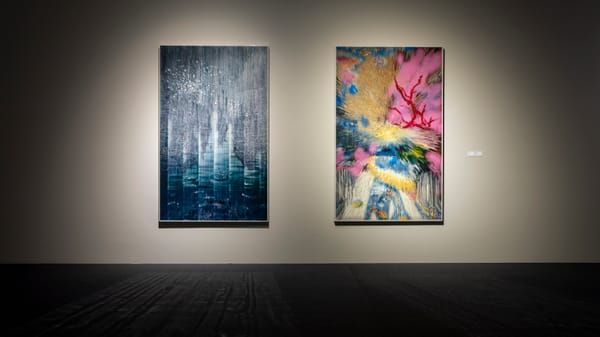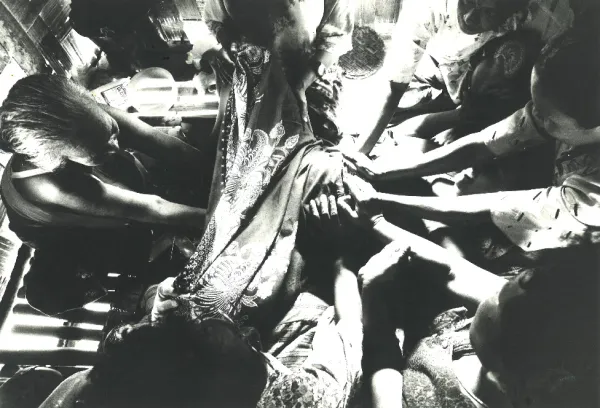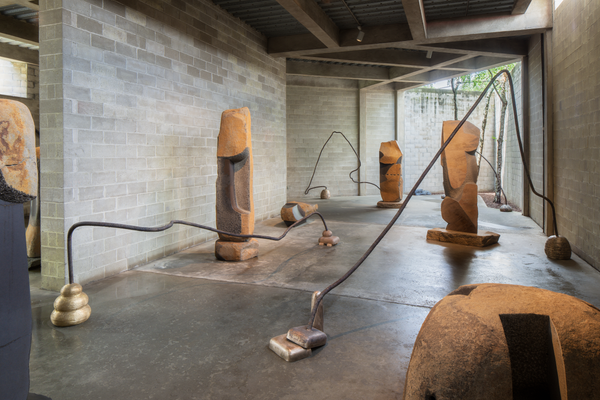Shows
Podium Gallery Opens with “Weirding Worlds”


Mar 23–May 4
Weirding Worlds
Podium
Hong Kong
Nestled in Hong Kong’s industrial Wong Chuk Hang neighborhood is the recently opened Podium gallery, a former factory unit awash in sunlight and stainless-steel panels. Its inaugural exhibition “Weirding Worlds” draws inspiration from Donna Haraway’s Staying with the Trouble: Making Kin in the Chthulucene (2016), in which the cyberfeminist scholar advocates for radical multispecism in the wake of climate crises. Imagining the Chthulucene, artists Shuyi Cao (b. 1990, Guangzhou), Anastasia Komar (b. 1986, Kaliningrad), and So Young Park (b. 1971, Seoul) together exhibited 16 mixed-media works that propose an interdependent, as opposed to apocalyptic, worldview.
With nine works on display, Cao’s works anchored the exhibition without overpowering it. Most notable was her nine-minute video work Begin with the End of What Comes Before (2024), a mesmerizing interpretation of biological evolution that parallels Haraway’s ethos. Projected directly onto the wall and accompanied by an ambient soundscape, Begin with the End depicts psychedelic metamorphoses between microscopic imaging and digitally animated landscapes. Throughout, faux-geographical and biological sequences—cloud shadows caressing rugged mountaintops and microorganisms transforming into bejewelled caves—impart a sublime, spiritual quality. Cao’s philosophical underpinnings are clarified by animated transmutations of inorganic matter into potentially sentient organisms, recalling Haraway’s bid to “become-with each other.”
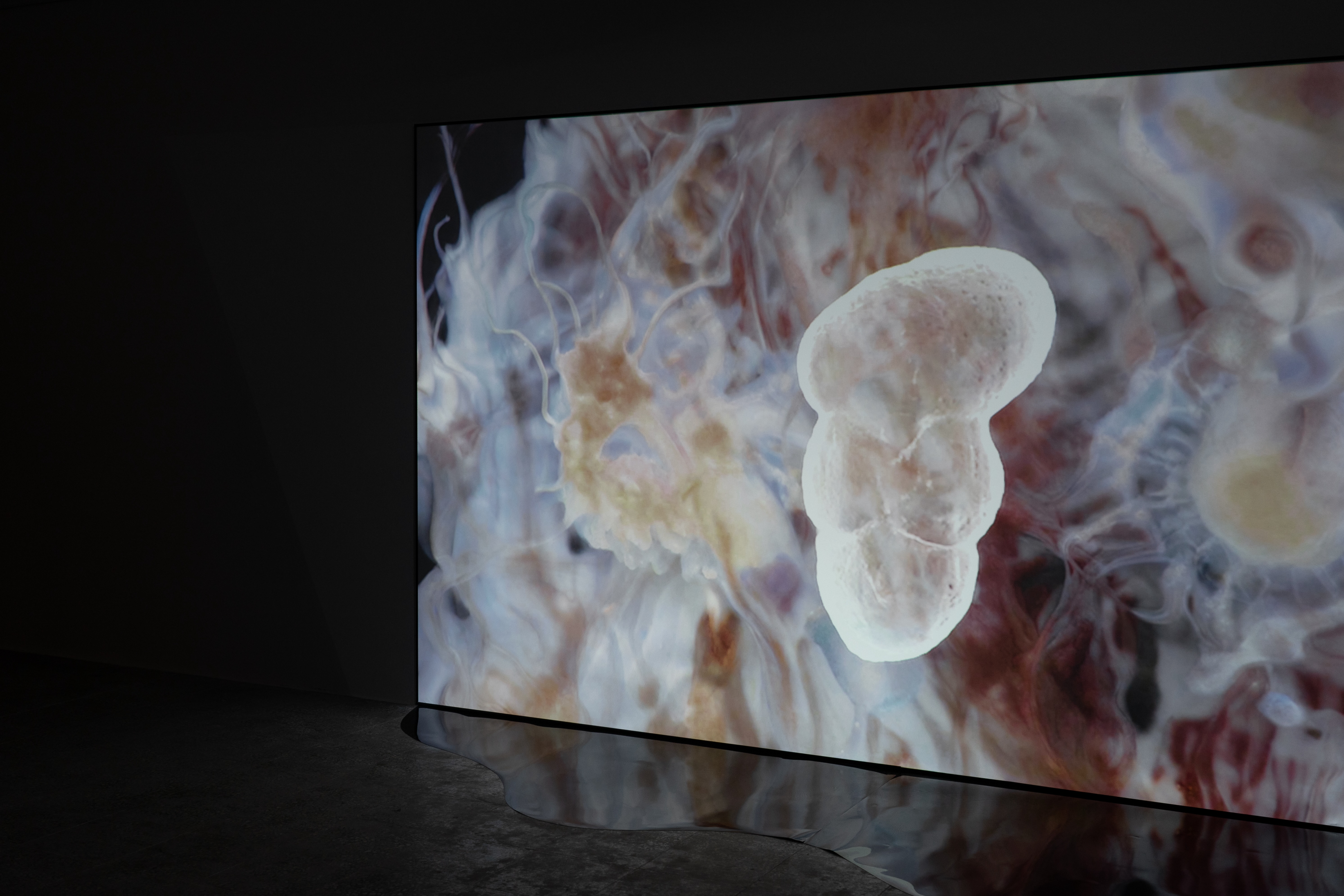

Similarly, Cao’s sculpture series The Other Writing (2024), made of aqua resin, aluminum, and fragments of various shells and stones, immediately appear like meteorites, or alien specimens. Yet, patterns within the glossy, colorful shards recall the microscopic imagery from Begin with the End, and their jagged bodies (which were cast on real geological surfaces) resemble Cao’s digitized mountainscapes. Contrary to their initial “alien” appearance then, the terrestrial sculptures materially and aesthetically embody this planet—from its overlooked wonders to its over-extracted resources. Her two other sculpture series, Intimacy of Strangers and as they folded in and breached out (both 2024), evoke a similar naturalism: crafted from handblown glass and glazed stoneware, respectively, the amorphic works were casually installed atop uniformly rectangular industrial cement blocks, accentuating their organic forms.
While Cao’s sculptures highlight natural materials, Komar’s paintings celebrate the synthetic. With a background in environmental design, she integrates classical mediums with experimental bioengineering, eliciting a strange harmony between the technological and the organic. Her acrylic-on-wood work Tuatara (2024), a Māori-derived name for mythologically significant, endangered reptiles, juxtaposes hundreds of hand-painted, swirling blue lines with an electroplated polymer creature slithering around its panel. The simple composition sustains viewers’ attention with its conflicting qualities—manifestly, between the painted block and the chrome tuatara spine; the latter’s metallic luster and its fluid shape; and the actual reptile’s communal importance in Māori culture (aptly, as messengers for the God of death and disaster) and its endangerment status.
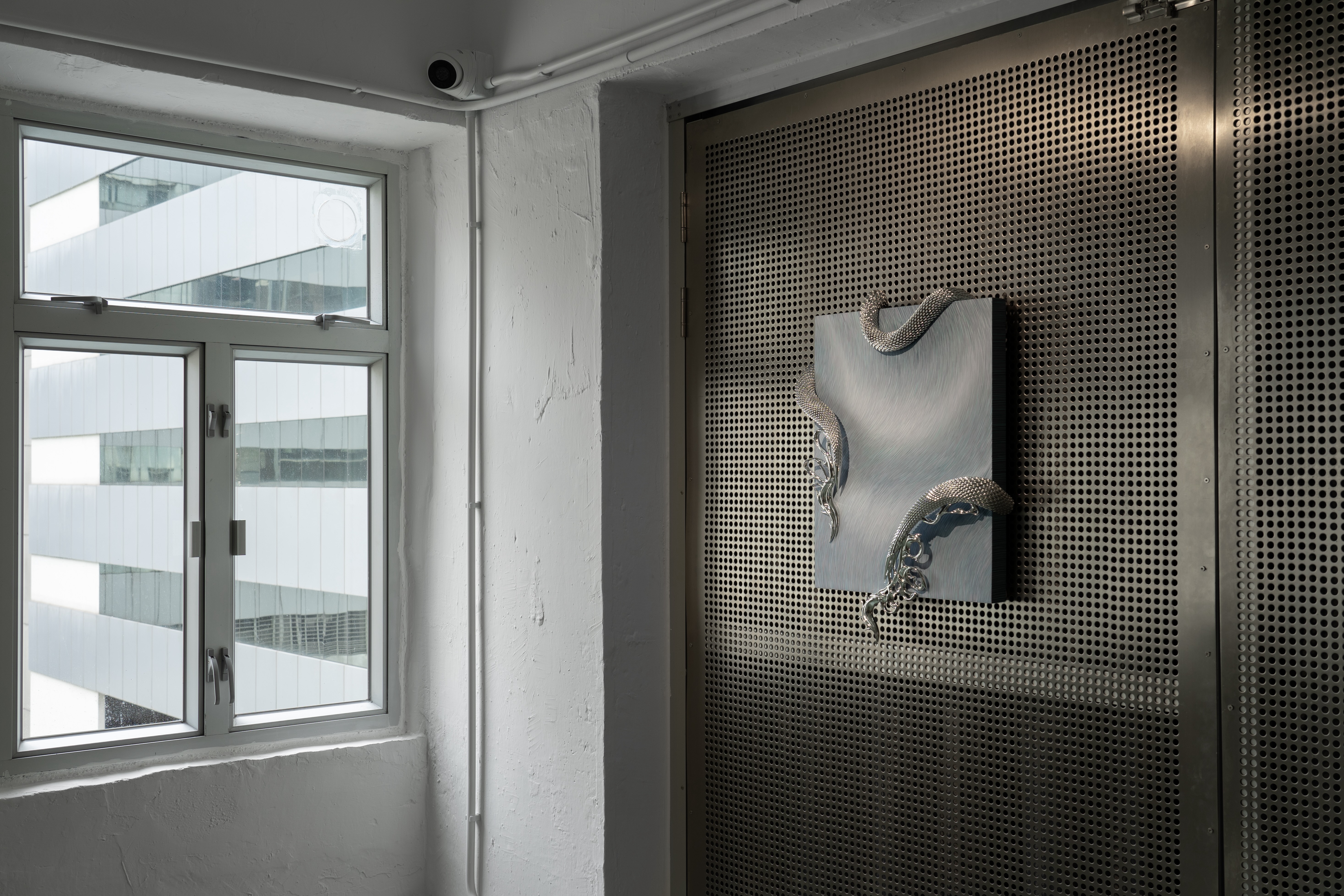

Komar’s material experimentation extends to glass polymer, as seen in Ascomycetes (2024), depicting the titular sac fungi draped over another pastel-toned abstraction on wood, this one appearing like the refraction of light. Komar depicts fungal spores in the bottom corner of the wood panel, also rendered in semitransparent glass polymer, alluding to how the phylum utilize a process of asexual reproduction, or “spore shooting.” Ascomycetes’ ability to self-propagate characterizes its rapid spread, but this evolutionary achievement is only made possible by other natural phenomena, such as the wind dispersing its spores. As facilitators for decomposition, the fungi’s entire life cycle symbolizes multitude species’ and ecological processes’ interdependence. This again harks back to Haraway, who insists that “we require each other in unexpected collaborations and combinations, in hot compost piles.”
Cao’s and Komar’s works are rounded out by Park’s more traditional paintings, which employ a mix of watercolor, oil, and chrome pigments to forge surreal, quicksilver-like landscapes. Her work The way, where I am going (2024) at once depicts waterfalls, a human foot, and a glacier—subjects that evoke perseverance and strength. Yet, Park subverts the subjects’ typical connotations by referencing the rite of foot washing, an act of humility and respect. Rendered in an ethereal color palette of candy-floss pinks, blues, and lilacs, The way instead projects an image of mutuality between humankind and nature. Her additional paintings (all 2023–24), in the same serene colors, are equally paradisiacal: Laputa references Hayao Miyazaki’s eponymous 1986 film about a castle in the sky; Deep sea and Remnant portray abstract feminine forms descending from the clouds,; and After the waves depicts a dissolved, flooded terrain.
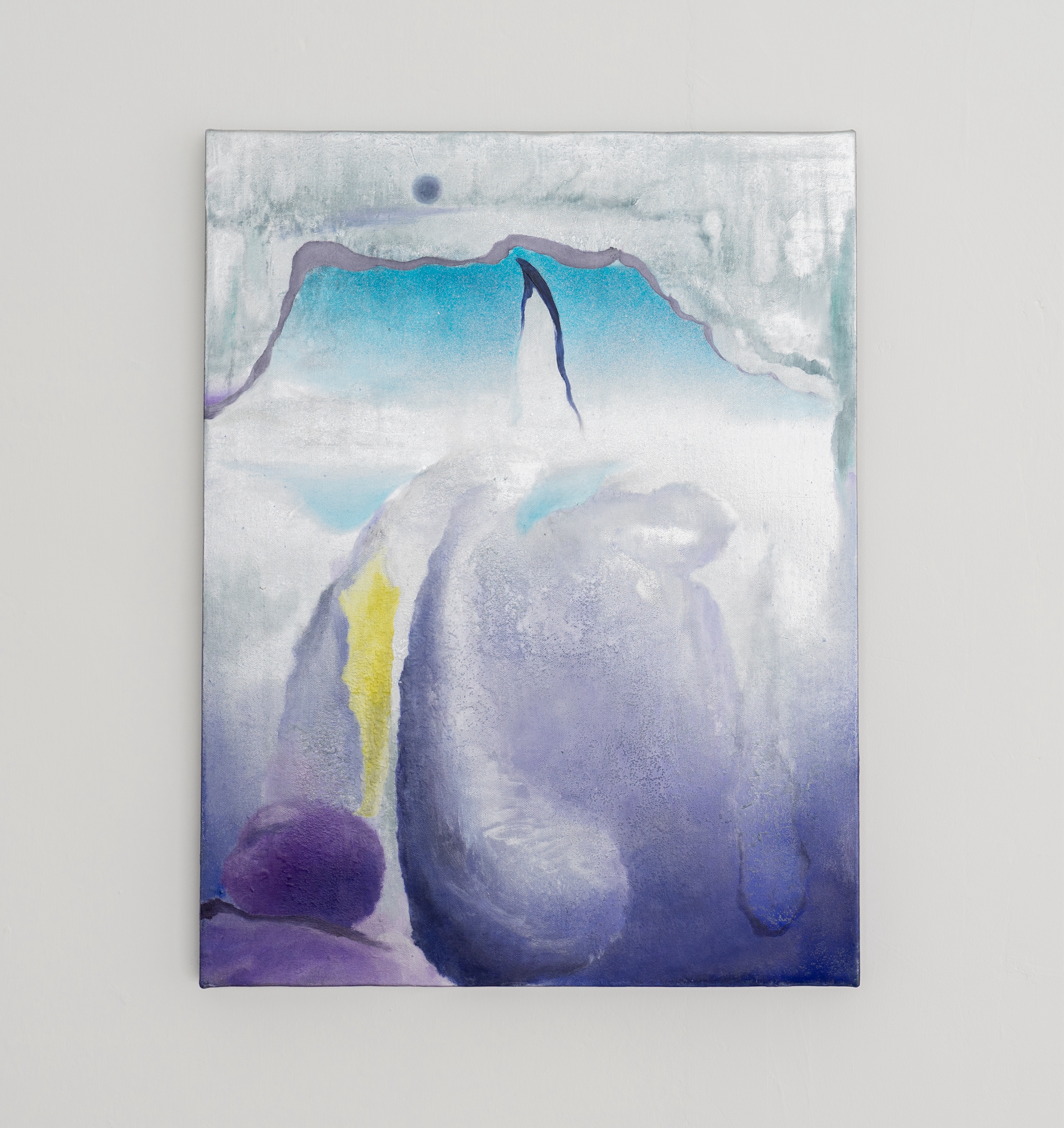
As an inaugural exhibition, “Weirding Worlds” succeeded in presenting three emerging and midcareer artists’ diverse practices while remaining coherent. That is, despite providing unique interpretations and responses to the theme at hand, all artworks appeared to be in conversation with each other, evoking the symbiosis, or the “making kin,” that Haraway so ardently champions.
Anna Lentchner is assistant editor at ArtAsiaPacific.





